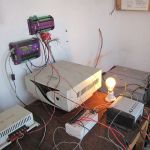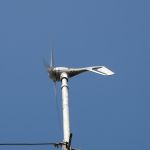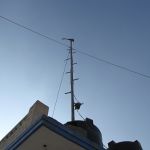General Poll
| Solar Photovoltaic – Wind Turbine Hybrid RAPS System |
 |
 |
 |
|
It is now well known, as well as RIDS-Nepal’s practical experience, gained over the last 16 years, that access to improved energy services, such as stove (for cooking and room heating) which carries the smoke outside the kitchen or basic indoor lighting, is an important part of community development, aiming to improve impoverished communities’ living conditions. In order to improve the access to energy services it is crucial to have suitable and sustainable resources of energy available. These are for most remote, high altitude Himalayan village communities in Nepal, with whom RIDS-Nepal is working, the local available renewable energy resources such as the energy contained in sunshine, the wind, local streams and river, biomass (if used sustainable), and in various areas available through geothermal energy resources. RIDS-Nepal has since the late 90’s developed new concepts and technologies to tap into the various RE (Renewable Energy) resources, and to convert them into more useful energy services, such as electricity for basic indoor lighting (click here), heat (for cooking, room heating (click here) or hot water for improved hygiene (click here), improved agricultural production through greenhouses (click here) as well as other applications. RIDS-Nepal has also learnt that contextualized (for a defined context developed technologies) and installed RETs (Renewable Energy Technologies) play a central role in a long-term holistic community development project in partnership with a local village community. This, as people’s needs to be addressed are most commonly not met through addressing just one individual problem, but the need for better living conditions is made up of many different needs, which all have to be identify and addressed alongside each other over the course of a project’s life cycle. Thus any community development project approach has to consider a holistic, multi-faceted, long-term approach, rather than a mere single-oriented, short-term project approach. Thus, technical projects should never be considered in isolation of educational, health and social projects. Hence, neither should “just” health, or “just” educational or “just” social oriented projects be implemented in isolation of all other fields of expertise, as people’s needs and problems are always multi-faceted. This learning has been the basis for the creation of RIDS-Nepal’s long-term holistic community development concepts the “Family of 4” and the “Family of 4 PLUS”, which include possible solutions to needs and problems the local village communities themselves have identified and RIDS-Nepal has worked over the years on contextualized solutions. However, in the project we present here we focus on a Solar Photovoltaic (PV) – Wind Turbine (WT) RAPS (Remote Area Power Supply) Hybrid System, in order to utilize not just one local available RE resource but multiple renewable RE resources, so that remote located village communities, with no hope for any future grid connection, can consider to tap into their own local renewable energy resources and convert them through various contextualized renewable energy technologies into useful energy services such as e.g. electricity. The following schemata shows the basic idea of a RAPS Hybrid system, utilizing the local available wind and solar energy to provide the daily energy demands for a household, a whole village, a school or even a hospital. 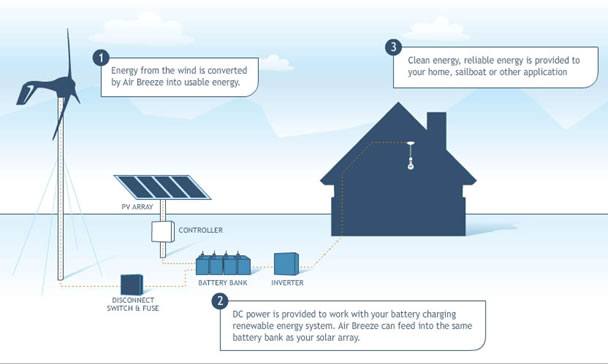 Picture copied from: http://airbreeze.com/index.php?q=land/how-it-works Picture copied from: http://airbreeze.com/index.php?q=land/how-it-worksMeteorological data and experience show, that often sunshine and wind are complimentary rather than corresponding with each other. That means on a sunny day, the sign of a more high pressure weather pattern, there is often not much wind and vice versa, due to the presence of different (high and lower) air pressure pattern and thus the occurrence of wind, clouds and less, or no, sunshine. Thus, an installed solar PV system in a remote village without access to the national grid, to generate and store (in a battery bank) electricity, works well during sunshine hours but does not generate any power during the night and minimal power during cloudy or rainy days. On the other hand, a wind turbine can generate power whenever there is a minimal wind speed (usually about >3m/s wind speed, which is considered the “cut-in” wind speed when a WT’s blades start to turn and generate power), with increased power output (in the power of three!) the greater the wind velocity. Wind is often available during more cloudy days and often 24 hours a day. Consequently, to tap into both, the available local solar AND wind energy resources, through a Solar Photovoltaic – Wind Turbine RAPS Hybrid System, allows an increased utilization of the local available RE resources, the “wealth” of a local community. With tapping into two (or in some cases even more) RE resources, we can create and enable a more sustainable energy generation solution. RIDS-Nepal’s Prototype Solar PV – Wind Turbine RAPS Hybrid SystemThe following diagram shows the RIDS-Nepal Solar PV – WT RAPS Hybrid system configuration.
1) Solar PV Array 160 watt
2) Air Breeze Wind Turbine 160 watt
For more details about the Air Breeze Wind Turbine: http://www.windenergy.com/products/air/air-breeze The Air Breeze Wind Turbine manual can be downloaded from: http://www.windenergy.com/sites/all/files/3-CMLT-1333_REV_A_Air_Breeze_Manual_0.pdf 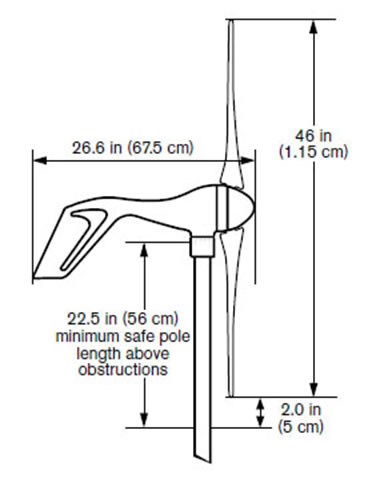
3) Battery Bank
4) DC to AC Inverter
5) Data Monitoring System DT80
 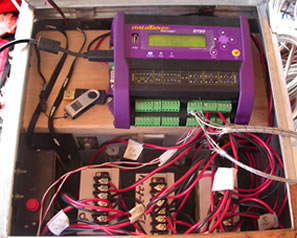 The DT80 dataTaker logger is the central unit to measure and record all the parameters we measure in the solar PV – WT hybrid RAPS system. The DT80 sends the recorded data on a periodical basis to the Internet server RIDS-Nepal databank (http://www.rids-nepal.org/databank) to follow continually the performance of the hybrid system. |
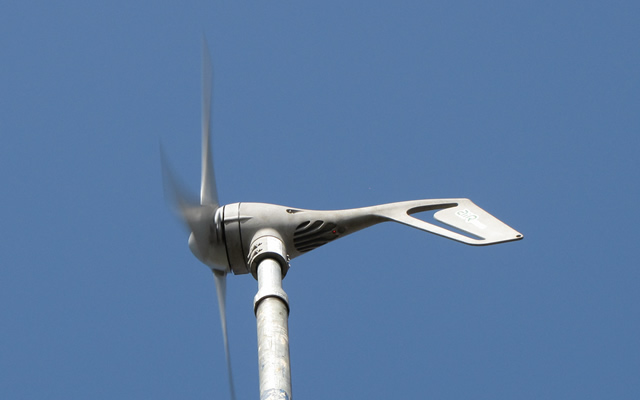
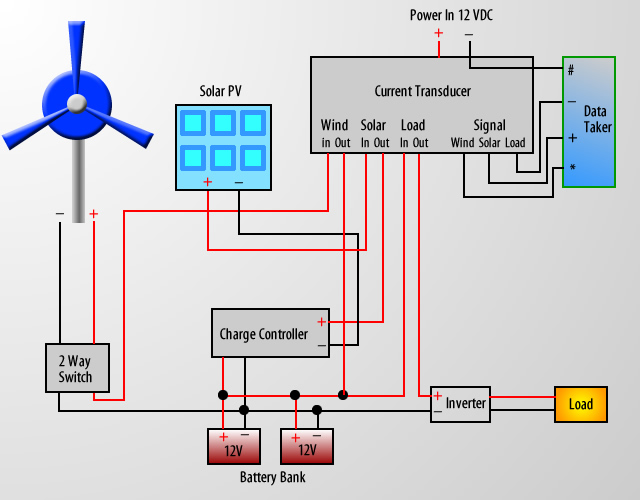
 160 watt solar PV array 12VDC system, connected through a MPPT (maximum power point) charge controller, as hybrid system with the Air Breeze wind turbine, to the 200 Ah battery bank.
160 watt solar PV array 12VDC system, connected through a MPPT (maximum power point) charge controller, as hybrid system with the Air Breeze wind turbine, to the 200 Ah battery bank.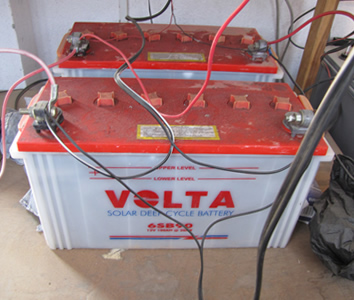 12VDC x 200Ah capacity (at the C20 value) Battery Bank consisting of 2 x 100Ah 12VDC Volta, deep cycle, flooded lead –acid batteries.
12VDC x 200Ah capacity (at the C20 value) Battery Bank consisting of 2 x 100Ah 12VDC Volta, deep cycle, flooded lead –acid batteries. The AJ 275-S sinusoidal inverter converts the 12VDC power from the battery bank into 230VAC power to provide pure sinusoidal AC power for or RIDS-Nepal Kathmandu equipment, such as the PCs, laptops and office lights. The “S” version has also the option to connect a solar PV array of up to 10A current generation direct to the AJ275 inverter to charge the battery bank.
The AJ 275-S sinusoidal inverter converts the 12VDC power from the battery bank into 230VAC power to provide pure sinusoidal AC power for or RIDS-Nepal Kathmandu equipment, such as the PCs, laptops and office lights. The “S” version has also the option to connect a solar PV array of up to 10A current generation direct to the AJ275 inverter to charge the battery bank.